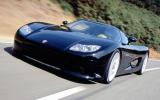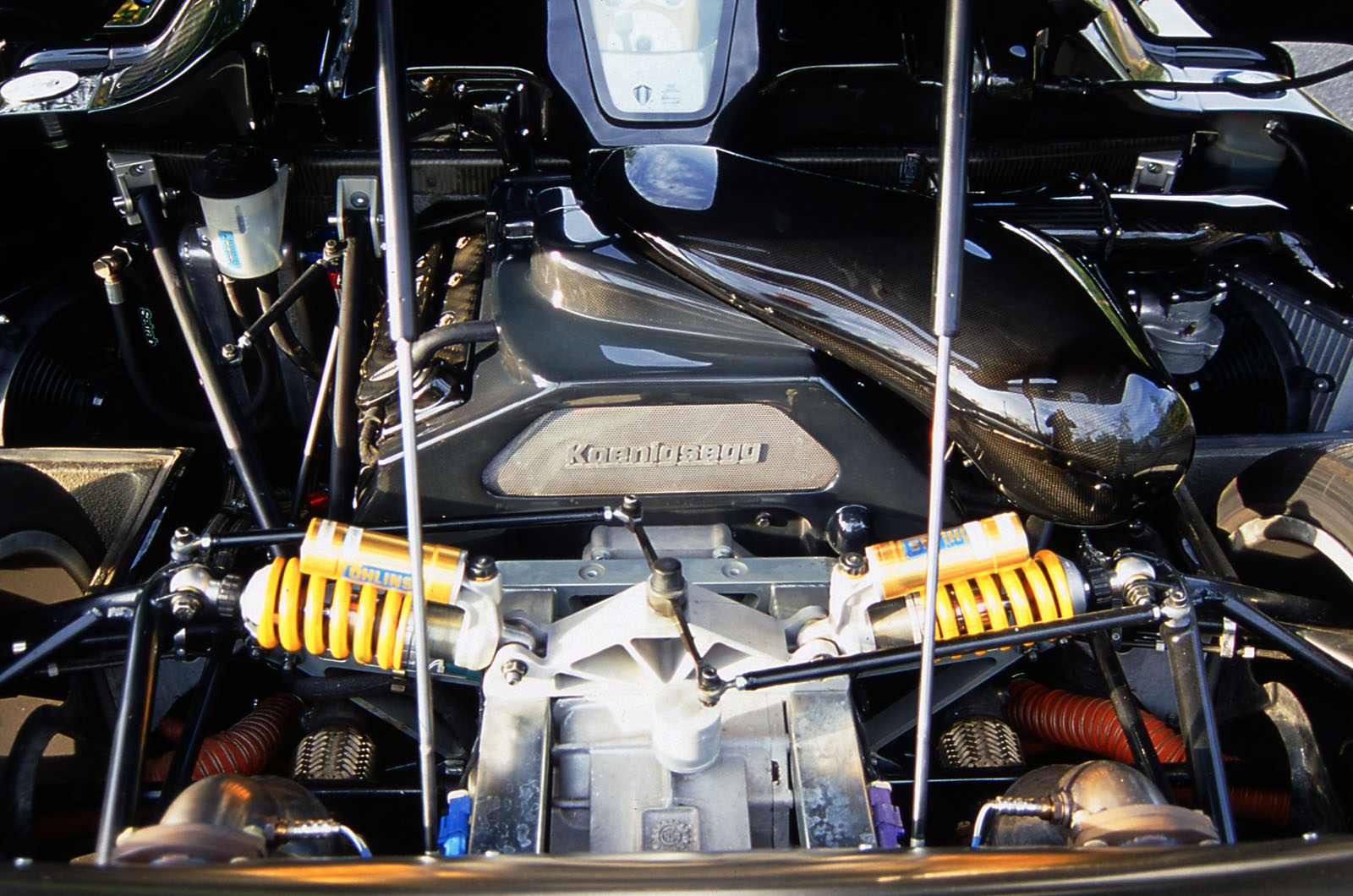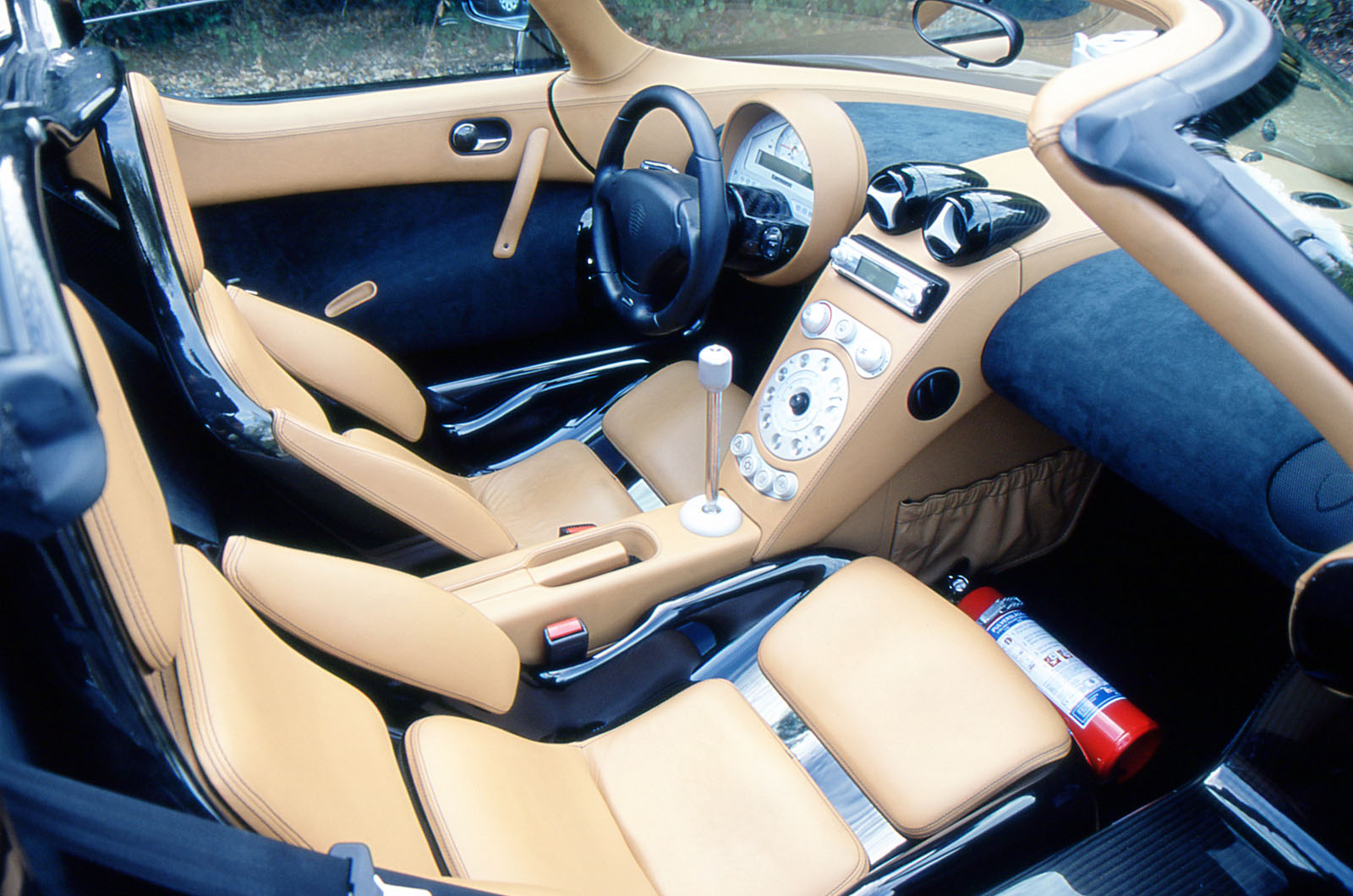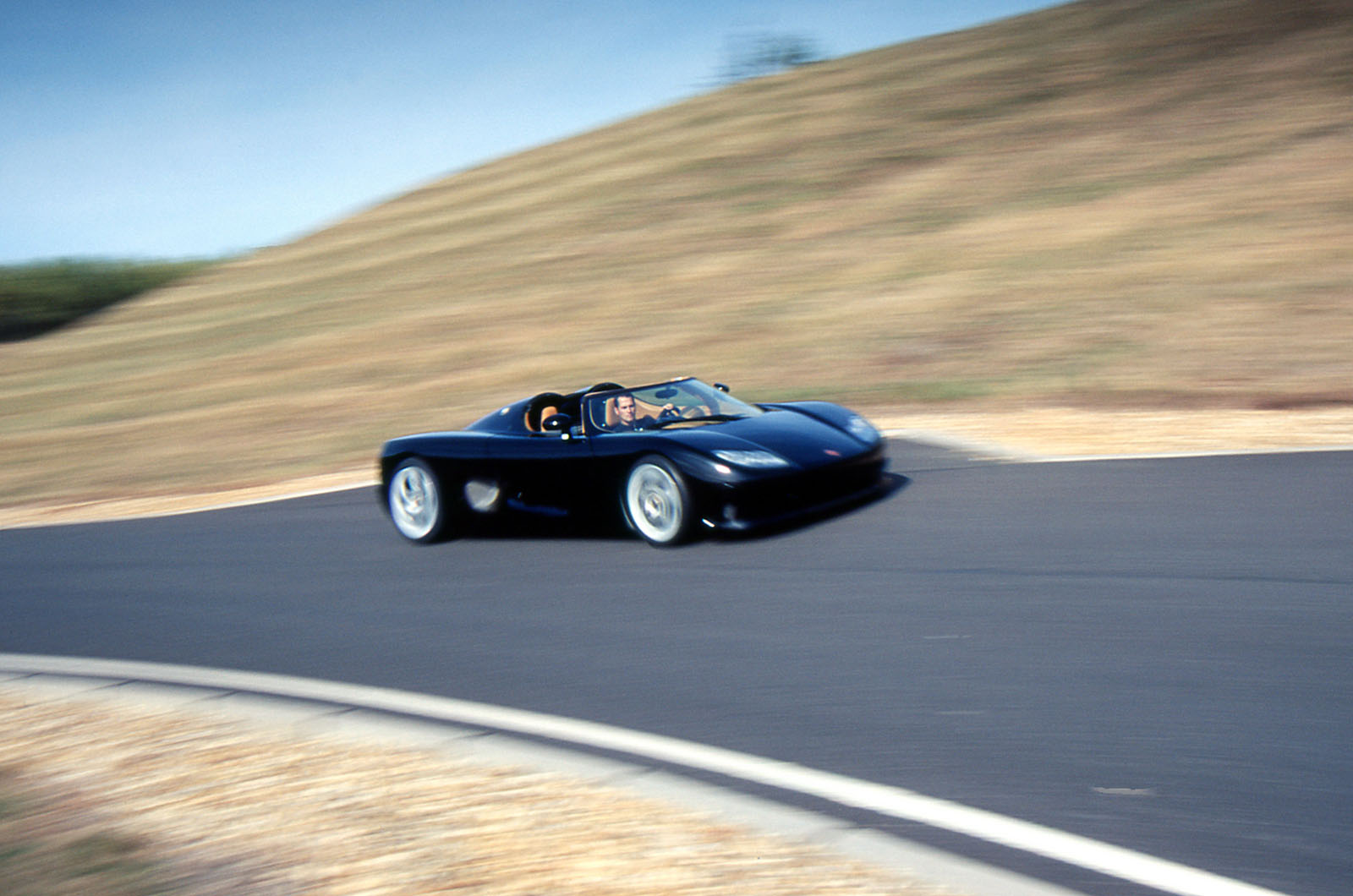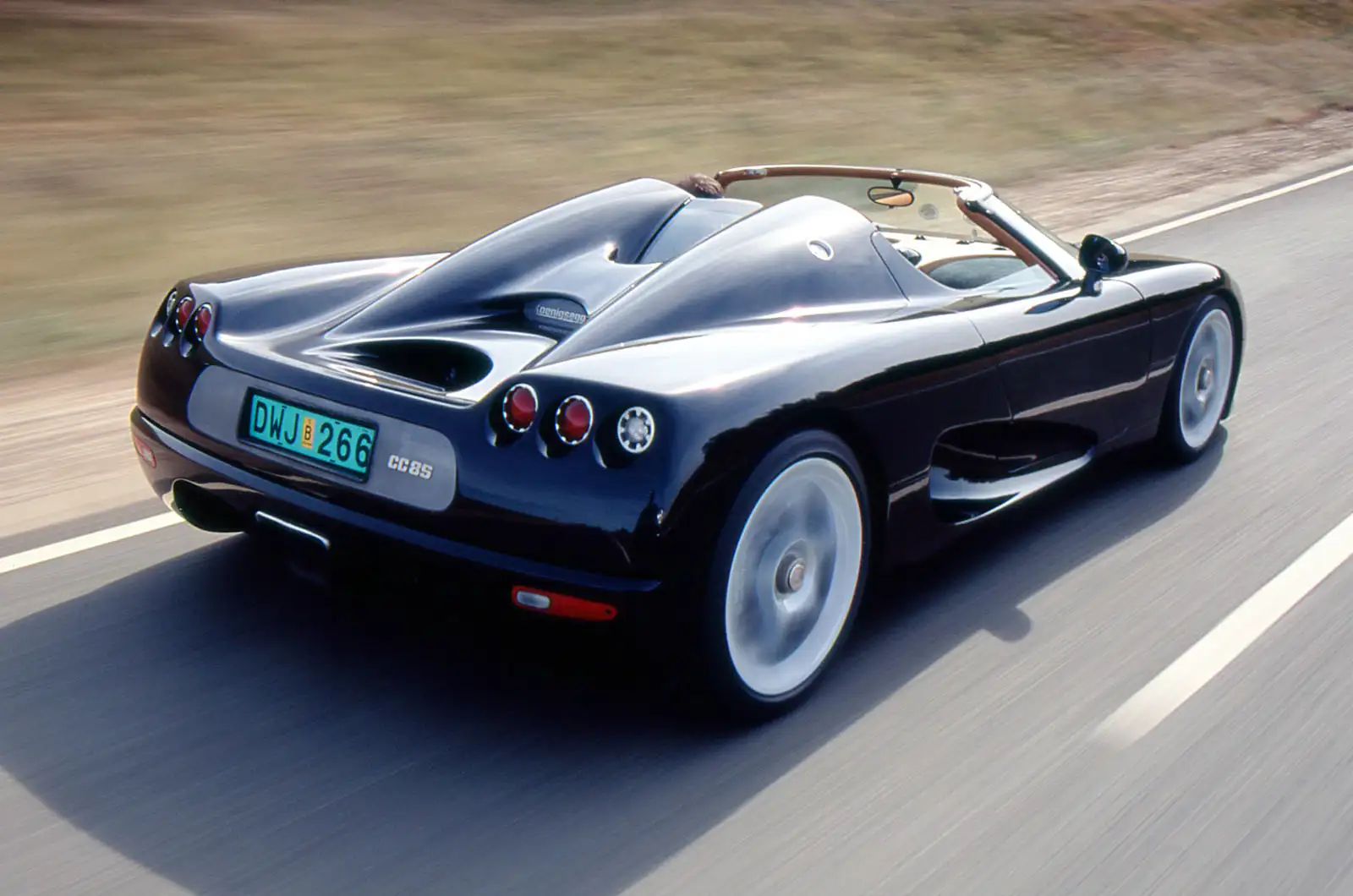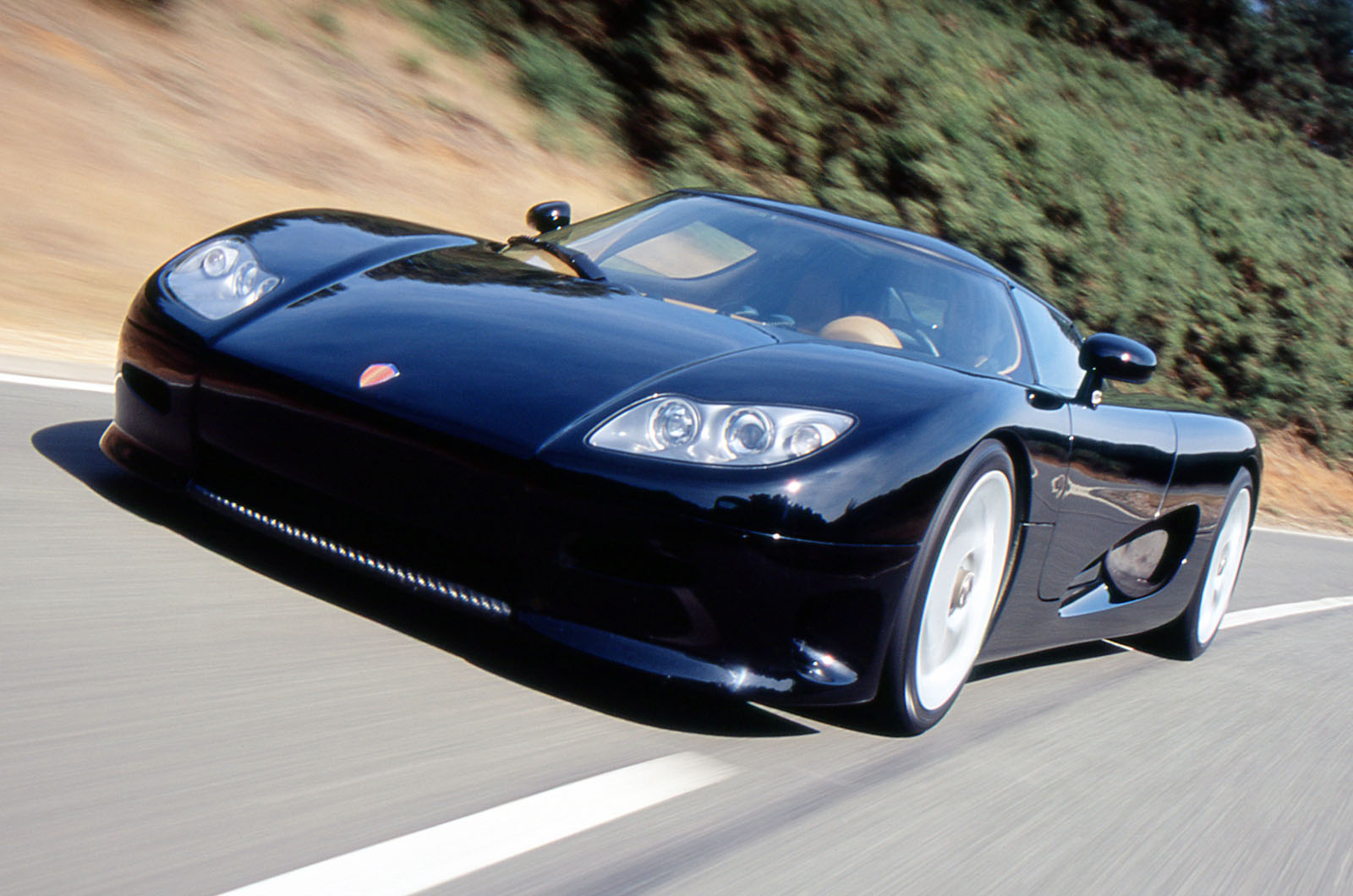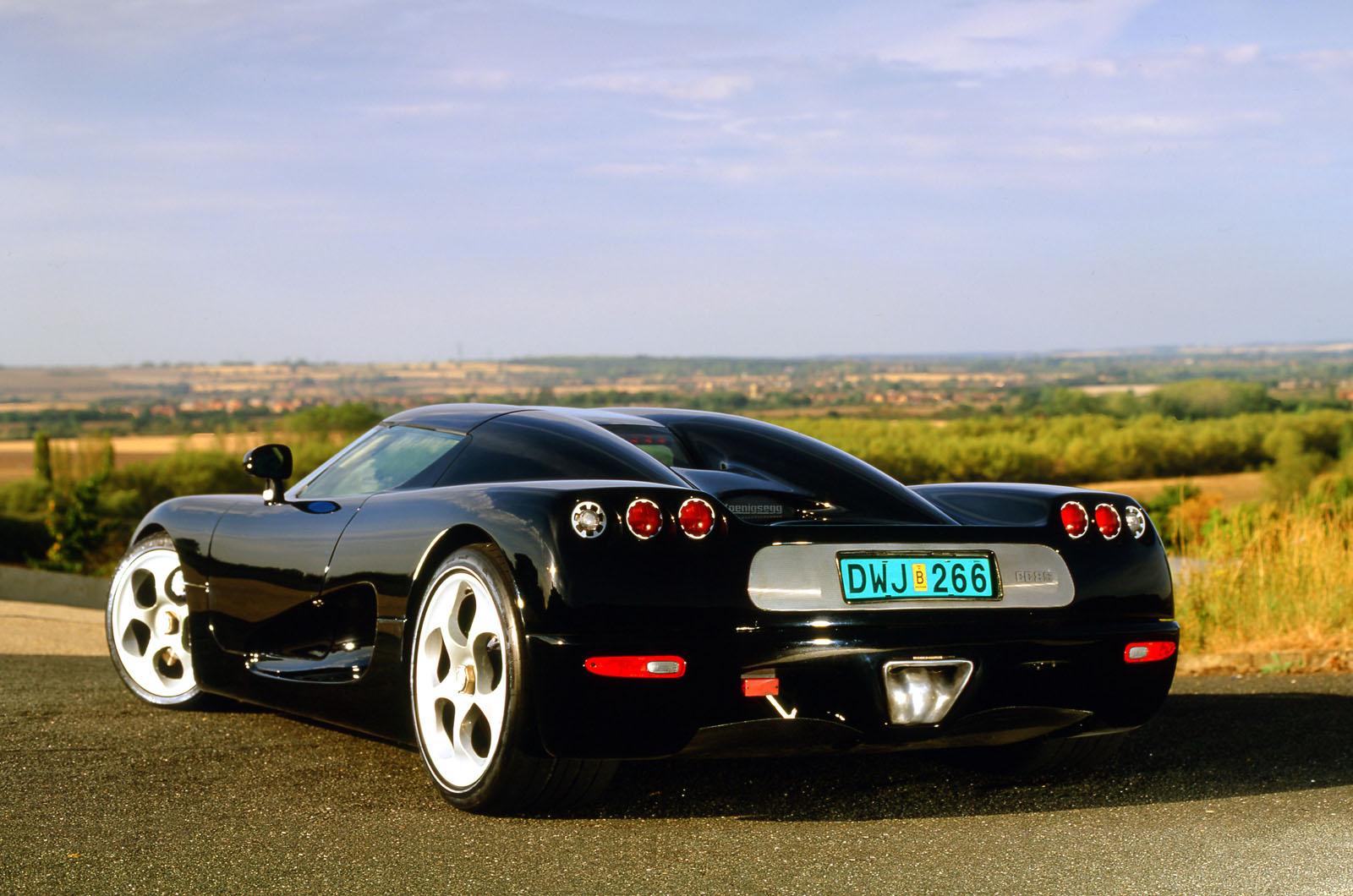The Koenigsegg has an impressive set of engineering credentials. At its heart lies a carbonfibre tub, laid up and cured at the factory, that Koenigsegg says is stiffer than that of any other supercar. Yet it weighs just 62kg.
There are subframes at either end and a front fashioned from chrome, molybdenum and steel, while at the rear, the engine and gearbox are carried by milled aluminium brackets. The bodywork is carbonfibre and in places it has been left unpainted, adding a sense of purpose. It is beautifully finished.
Power comes from a Ford 4.7-litre V8 which has been entirely reworked by Koenigsegg.
Inside you'll find forged pistons and con rods, while the headers are made from titanium and its induction system crafted from carbonfibre. A Vortec supercharge offering up to 1.2bar boost is fitted, a considerable figure given the engine's high 8.6:1 compression ratio.
Its headline figures of 655bhp at 6800rpm and 553lb ft of torque at 5000rpm appear to speak for themselves, but these monstrous outputs need some interpretation. For instance, every litre of this engine is being asked to provide 139bhp, which points to a mighty state of tune.
Though the torque peak is roughly what you might expect from the engine, it's not where you might expect it. Supercharged engines are renowned for producing great torque from idle, but this one is the exception.
At 3000rpm, where you might expect a car such as this to be shredding the tarmac, the Koenigsegg is producing barely half its maximum torque and nothing like as much as, say, a BMW 530d. The ramifications of this will shortly become clear.
Looking after all this power is a six-speed gearbox made by Cima in Italy. It finds its way to the road via 335/30 ZR 20 rear Michelins (those at the front are of considerably more modest 255/35 ZR 19 proportions, and our test car wore older 18in rims), which are suspended by wishbones at each corner and serious horizontal spring/damper units.
They contribute to an appearance under the engine cover that owes more to a Le Mans racer than a street machine.




















